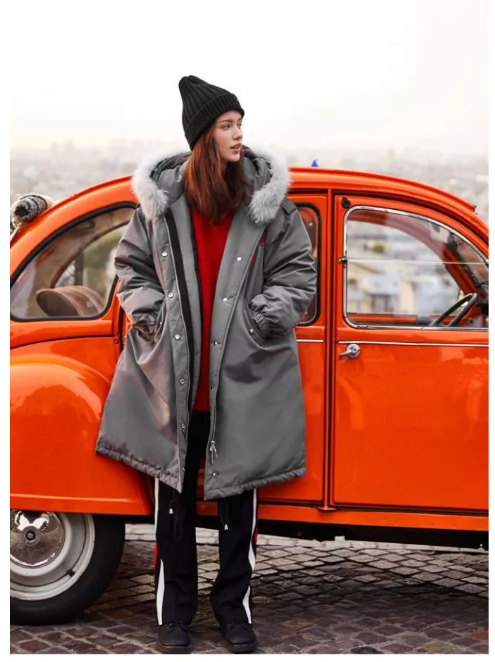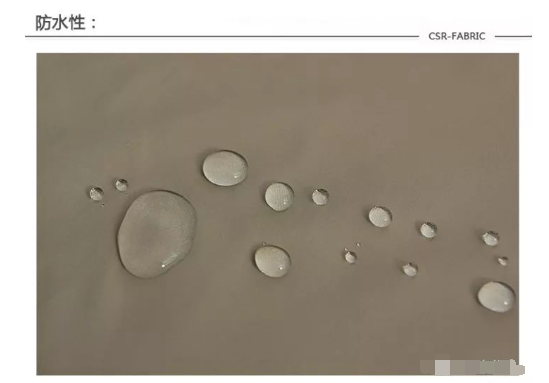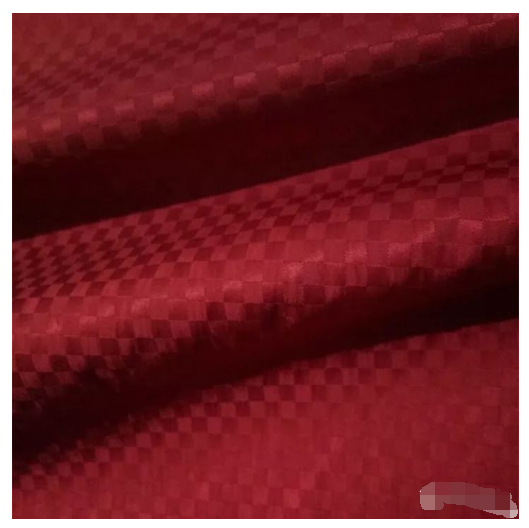How to choose down jacket fabric
I want to make a down jacket, but I search on Taobao , there are so many different kinds of fabrics, it’s dazzling. Wandou has sorted it out for you here. I hope that after reading it, you can clearly choose the fabric you want.

1
Down jacket fabrics can be divided into the following four categories:
1. Waterproof coating ( Coated) fabric:
This type of fabric has waterproof and moisture-permeable properties and is generally used for mountain professional down jackets. Most down jackets made of waterproof fabrics are not taped.

2. High-density waterproof Fabric
The density of the fabric itself is very high, and then the post-processing process of merging the surface fabric at high temperature to reduce the gaps in the fabric improves the velvet resistance.
The fabric is the thinnest and softest among all down jacket fabrics, and it is windproof, water-repellent and breathable. This type of fabric is the most widely used fabric for down jackets and down sleeping bags.
3. Ordinary woven fabrics plus anti-flannel cloth
Generally, nylon with lower density is used Or polyester. When making down jackets, adding anti-velvet fabric to the inside of the fabric can prevent velvet and has good anti-velvet performance.
The disadvantage is that the anti-flannel cloth affects the softness of the down jacket and increases the weight of the entire garment.
Another method is to perform anti-velvet treatment. The process is to apply a layer of anti-velvet glue on the inner layer of the fabric. The fabric feels very poor and is not breathable. .

4. Glossy patent leather Fabric
Patent leather is made by spraying paint on materials such as genuine leather or PU leather. It is characterized by shiny color, softness, waterproof and moisture-proof, not easy to deform, and easy to clean and polish. reason. This fabric is known for being shiny, flirty and unisex.
2
General down jacket fabrics and characteristics:
Face fabric: high-density nylon spinning
Such as 300T, 310T matte nylon spinning, raw material specification 40D*40D . In the post-finishing process, we also do more three-proof processing, which refers to velvet-proof, waterproof, and windproof. The reference price of the down jacket fabric wholesale market is between 5.80-6.30 yuan/meter
2. Lining: pongee/polyester taffeta
Pounge: mainly 290T and 300T matt pongee. The reference price of this down jacket fabric wholesale market is between 5.80-6.30 yuan/meter.
Polyester taffeta: Polyester taffeta is a thin, all-polyester fabric woven from polyester filament. It has a bright appearance and a smooth feel. Product specifications are 290T, 300T, 320T, etc. What is more popular now is high-density polyester taffeta.
3. Introduction to the characteristics of down jacket fabrics
(1) High density.
We can see that whether it is nylon, pongee or polyester taffeta, they all emphasize high density. Analyze the reasons: on the one hand, it is suitable for heat preservation; on the other hand, it facilitates subsequent finishing and deep processing.
(2) Functionalization
In addition to conventional waterproofing and waterproofing, the above down jacket fabrics In addition to oil and anti-UV treatment, it also has the functions of anti-static, moisture absorption and perspiration. In addition, environmentally friendly printing and dyeing make it very comfortable to wear and the function is even better
3
Some basic concepts:
1. The difference between 20D and 40D down jacket fabrics:
This involves a concept, what is the D number of fabric?
20D and 40D refer to the fineness index of the yarn. The smaller the number in front of D, the thinner the silk, the larger the D number, the thicker the silk. He said that the weight of 9000 meters of yarn, 20D means that the weight of 9000 meters of yarn is 20G, and 40D means that the weight of 9000 meters of yarn is 40G. 20D is thinner than 40D, and the density of 20D reaches 380T, while the density of 40D is 310T. They are both classic fabrics for down jacket fabrics.
What is the difference between 2.410T and 380T fabrics:
Down jacket fabrics are basically polyester For chemical fiber fabrics such as taffeta/nylon, 410T and 380T refer to the density of the fabric. For example, 410T means: the sum of the number of yarns within one inch in the warp and weft directions is 410. 380T means: the sum of the number of yarns within one inch in the warp and weft directions is 380.
3. Commonly used down jacket fabrics on the market:
Down jacket fabrics on the market generally include the following types:
Lightweight is a popular trend, such as 380T nylon and the like. The square meter weight of the fabric is about 35G, and it is generally made of chemical fiber fabrics.
There is also a type of memory fabric or anti-memory fabric that is also used. The square meter weight of the fabric is about 120G, which is relatively thick.
Down jacket fabrics should be velvet-proof, windproof and breathable, and velvet-proof properties are particularly important. The anti-velvet performance depends on the yarn count density of the fabric used. At present, the feathers sold on the market are mainly nylon taffeta and TC cloth. Generally, the yarn count density is above 230T, 250T is the best, and below 230T, it is difficult to ensure that the fluff is not drilled.






